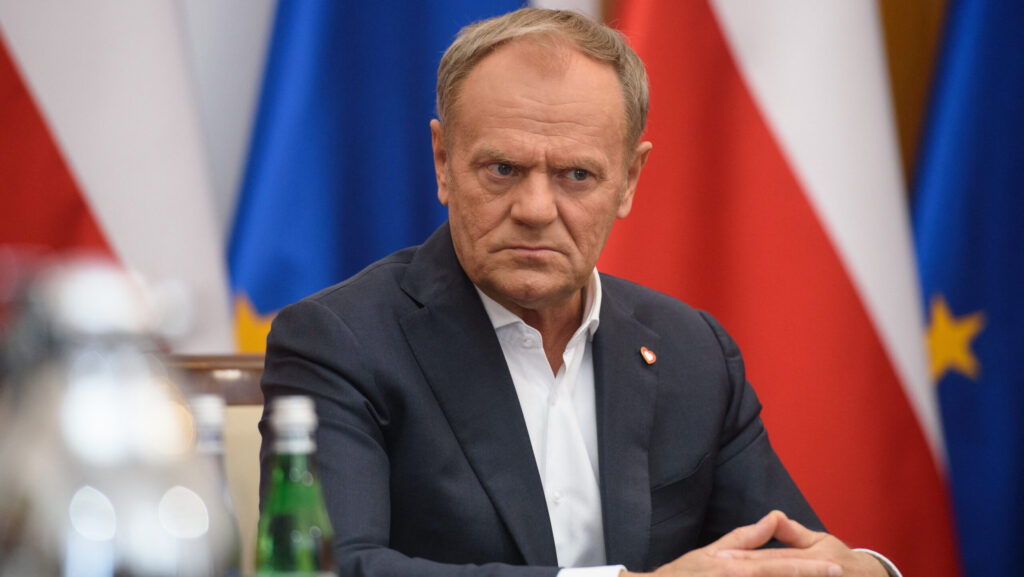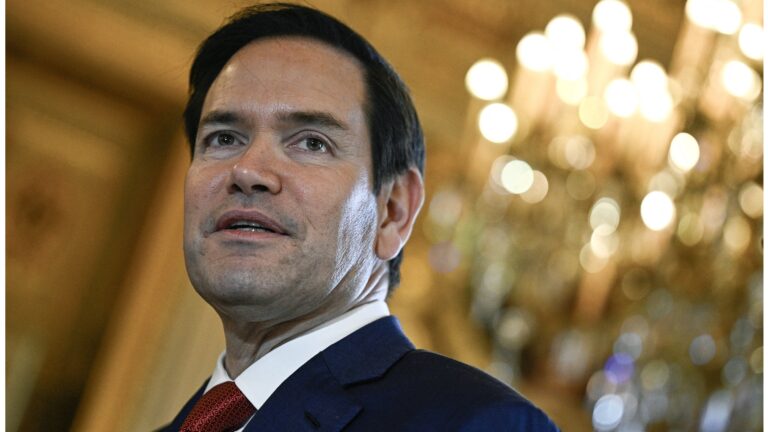The central proposition to help decode the nature of the European polis is that the EU is simultaneously a legal and a political formation. It is, of course, possible to look at legality and politics separately, which is what most commentators do, but at crisis points, this becomes misleading, because it is only through the analysis of the interaction between the two that the functioning of the EU makes sense. As always in such interactions, there will be ambiguity, because it is hard to determine which has priority, law or politics. I have argued that any major change requires political will, but at the everyday level, the legal form used by the technocracy dominates. Note that domination is not absolute, political inputs can change matters, but then politics has to be recast into legal language and can only be challenged—by the citizens, for instance— through legal action (Pistor is relevant on the importance of legal language1). For many, this is deeply frustrating. And, furthermore, this reciprocal relationship raises the issue of juristocracy.
If we accept this intimate, interactive relationship between law and politics, two things follow. First, the values on which the rule of law is based are European values (rule of law is mentioned explicitly in Article 2) and, second, that these values of legality should apply to the practice of politics, the exercise of political power. The values in this context are straightforward enough. They include the integrity of sources and evidence-based argument, the presumption of innocence, and high standards of proof, audi et alteram partem (hearing the other side), no retroactivity of judgement, and no double standards. Further, there is a very difficult problem in law about how far an actor is responsible for the secondary and unintended consequences of his or her action—the problem of remoteness. The test in law turns on foreseeability, but this does not really work in politics. What does happen, however, is that one actor may hold another responsible for his or her actions, which the second party denies or ignores. The result is likely to be resentment. Yet again asymmetry ensues.
Ideally, the administration of law should be quite separate from politics; in reality, as has been argued, these are difficult to keep fully apart. But if the European polis places mounting emphasis on the rule of law as central to its concept of the political, these legal principles should be central in politics too. We know they are not. Double standards and inconsistencies can and do have a destructive effect on political legitimacy.
Political inputs can change matters, but then politics has to be recast into legal language
The attribution of populism to the demos—some, most, or all of the demos—can be found here, and behind it lies the ancient fear of ochlocracy. However, the question can also be raised as to whether too many impediments can be created, whether the fear of mass democracy has gone so far, set up so many intermediate institutions between voters and power that the outcome is a variant of elite rule, a kind of new aristocracy or oligarchy. Added to this tension is the role of referenda in democracies. Do they represent popular sovereignty? What can a referendum decide? Can a referendum be construed as the expression of the will of the people that can override constitutional adjudication? Who, then, is the sovereign? concludes is contrary to the constitutional order. It should also be clear that the constitutional court is separate from the rest of the judicial system. What this means is that once such a tribunal has been set up, the political system becomes mixed. Political decisions are given legal form by the legislature, but constitutional courts can launch legal initiatives that have political consequences. Furthermore, the mixed system provides opportunities for the opposition to challenge the political steps of the government by appealing them to the constitutional court, thereby adding to the legalization of politics.
In sum, there are three aspects to this relationship between legality and political power—the legalization of politics, and vice versa, the coincidence of legality and legitimacy, and juristocracy which further involves the doctrine of constitutional identity. None is easy to resolve. A close examination of these issues, both at the level of the polis and the member states, demonstrates the gaps, ambiguities, and asymmetries that affect the democratic order. The starting point is, of course, the proposition that in a democratic order supreme power lies with the demos in the form of popular sovereignty, as embodied by a democratically elected legislature. But this power cannot be absolute for fear of the tyranny of the majority, hence this absolute power cannot in fact be absolute, but must be tempered by checks and balances. The nature of these checks and balances is less than unequivocal and much argument—a good deal of it party politically and ideologically motivated—focuses on where the limits should lie. Basically, even if the starting point is the demos, the system should erect multiple impediments to popular sovereignty, not least because ‘the people’ cannot be trusted to be democratic enough.
Juristocracy is a relatively new issue and was certainly not a part of the legal upbringing that I received in the early 1960s. I recall some reference to Roscoe Pound and whether judge-made law should keep pace with social change or whether there were objective, immanent standards of the law. What has changed the nature of democratic systems throughout Europe, however, has been the adoption of constitutional courts (called tribunals in some countries) in the majority of member states, even while it is absent in the Netherlands and Finland; in Estonia a chamber of the Supreme Court performs constitutional adjudication. The process began after 1945 with Germany and Italy setting up such courts, very much at US urging or insistence. Indeed, there is evidence that post-war US advisors saw such courts as a necessary condition of democracy, based on the US Supreme Court as the model. So no constitutional court, no democracy. Of course, this overlooked the fact that the first such court was set up in Austria in 1919 at the urging of the jurist Hans Kelsen, who became its president.2 The essence of such a court is that it has monopoly review powers over the legislature and can strike down legislation that it in the abstract, is open: is it in the legislature or in the constitutional court with its power of review? The answer, of which Kelsen was aware, is that supreme power now lies in the process of constitutional amendment.3 Whoever can amend the constitution can also enlarge or diminish the powers of the constitutional court.
This sounds somewhat absurd on the face of it, but it follows logically from the innovation. If one establishes an institution that floats, as it were, above all other bodies,4 then the quality of popular sovereignty has to be reassessed. What motivated Kelsen was his scepticism about the legislature’s commitment to self-limitation, and this was not as such unreasonable. But the innovation also meant that there could or would be the potential for conflict between the legislature and the constitutional court. This has, in fact, been the case in a number of states, not least Germany where the federal constitutional court, the Bundesverfassungsgericht operates as a major constraint on the Bundestag and, hence, the government.5
This sounds somewhat absurd on the face of it, but it follows logically from the innovation. If one establishes an institution that floats, as it were, above all other bodies,4 then the quality of popular sovereignty has to be reassessed. What motivated Kelsen was his scepticism about the legislature’s commitment to self-limitation, and this was not as such unreasonable. But the innovation also meant that there could or would be the potential for conflict between the legislature and the constitutional court. This has, in fact, been the case in a number of states, not least Germany where the federal constitutional court, the Bundesverfassungsgericht operates as a major constraint on the Bundestag and, hence, the government.5 This basically means that it is not enough to win elections. If you are a new government and want to launch a radically new programme, you will have to tread carefully. That is, unless you are elected with a constitutional majority, but this is very rare.
In Europe after 1945 whenever a democratic system was introduced, a constitutional court was a necessary part of it. This applied to Spain, Portugal and Greece, to Malta and Cyprus (but in the latter the constitutional court was merged with the Supreme Court; the situation is analogous in Ireland and Estonia). Note that Scandinavia was exempt, ditto the Netherlands, so that where recognized democracies existed, a constitutional court was not deemed necessary. After 1989, the former communist states went in the same direction, setting up constitutional courts usually with no antecedent traditions (in Poland it was established in 19866). These courts thus acquired extensive powers and it was generally assumed that these were inherently democratic, requiring no limitations. There is an irony hidden in here somewhere. Kelsen distrusted the self- limitation of politicians, but both in his own time and in retrospect, the Kelsenians had no doubts about the self-limiting capacity of judges. The protagonists of liberal democracy, being the sole legitimate version of democracy, take the introduction and workings of the constitutional court as the primary guarantor of the rule of law. They deny, in effect, the contingent nature of the innovation and the unintended consequences of juristocracy. In fact, the direct and indirect— unintended—outcome has been the rise of juristocracy.
In fact, the direct and indirect—unintended—outcome has been the rise of juristocracy.7 Judges are not in any direct way subject to the doctrine of democracy encoded in popular sovereignty and exercise very considerable power over the self-same democratic order. The only formal limitation, as argued, is constitutional change. This might not have mattered so much if constitutional court judges had exercised their powers with self-limitation and intervened in politics only where major issues of constitutionality were involved. The record is nothing like as straightforward as that, particularly in the early years of a democracy. Indeed, and this is the heart of juristocracy, constitutional courts have enlarged the scope of their jurisdictions and involved themselves in issues that in a previous era would have been dealt with by politicians. It must be added that the politicians themselves have connived at this. They have outsourced power to the judiciary, essentially because this is then easier to explain to the electorate, as if to say, ‘sorry, there’s nothing we can do here, the judges say this is the law’.
A closer examination of these constitutional courts shows something else, basically qualitative differences between how these courts operate. The central question is a theoretical one about where ultimate power lies: with the sovereign people as represented in parliament or with what is actually happening, a continuous constitutional review which at times goes counter to the will of parliament. This may be seen as the core of the problem identified by Kelsen, the aforementioned Austrian jurist.
Indeed, there is a growing literature on juristocracy, rule by judges.8 Much of this literature is critical, in as much as judges are seen as involving themselves in political decision- making, an area that is supposedly the sovereign competence of parliaments and governments. The explanation is centred on a very long-standing disagreement in jurisprudence. What is the proper role of the judge, to interpret the text as strictly, ‘objectively’, as possible, or to assess the text in a way that reflects the intentions of the legislator and the expectations of society? There is, for what it is worth, no easy answer. The question in a democracy is whether the role of the law is to set limits to political power or whether political power is the articulation of popular sovereignty that transcends judicial power.
Whoever can amend the constitution can also enlarge or diminish the powers of the constitutional court
Many, if not all, of these questions have played a major role in the evolution of the democratic rules of the game in Hungary. Hungary has been the target of extensive criticism in the Western media to the effect that the rule of law has been overwritten by the centre-right government. This misses the main point, which is overwhelmingly about where ultimate power should lie, with the legislature or the constitutional court.
In the 1990s, the Constitutional Court in Hungary arrogated a great deal of power to itself, which it was able to do not least because it was dealing with inexperienced governments, because it was indirectly encouraged to do so from the West, because the Constitution was based on the 1949 Communist Constitution and had gaps and, possibly, because the president of the court, László Sólyom, had very clear ideas of his own as to how the Constitutional Court should impact on the country.9 In summary form, he decided that regardless of the actual text of the version of the Constitution agreed (in a hurry) in 1989, he would make decisions by what he called the ‘invisible Constitution’. One of the decisions in Sólyom’s time that had far- reaching consequences was to block any attempt at lustration, by striking down a law that would have initiated this. Even more striking, indeed striking at the heart of Parliament’s core power, was the Constitutional Court’s decision to annul sections of the 1995 budget. By any standard, this was an extraordinary extension of judicial power and led eventually to a reassertion of the power of the legislature. But that had to wait until after 2010, when Fidesz won the elections with a constitutional majority. The current situation is somewhat obscure. On the one hand, a government with a two-thirds majority is constrained only by the norms of self-limitation; on the other, (as noted) the current president of the Court, Tamás Sulyok (2018), has asserted that the Constitutional Court ‘floats’ above all the other spheres of power (legislature, government, legal system).
If those have been the dynamics of constitutionalism in Hungary, a back-and- forth movement of power between the Court and Parliament, matters have been different elsewhere. Thus in Germany, the Constitutional Court has regularly arrogated power to itself and clashed with the Bundestag. Thereby the court has the power to rule a law ‘not compatible’ with the constitution and to require the legislature to revise it. Equally, the court can issue ‘binding interpretations’, meaning that only one interpretation of a text can have legal validity (this practice also exists in France and Italy).
There is no equivalent in Hungary. In Germany and France, there is abstract review referral, requesting that the court (the Conseil Constitutionnel) undertake prior review of legislation, a procedure regularly used by the opposition. This procedure inevitably gives the constitutional court certain political powers. Again, in Hungary prior (abstract) review does exist, but only in a few exceptional circumstances. Another feature of this judicialization is ‘autolimitation’: restraint by the legislator for fear of annulment by the constitutional court. This can be a serious constraint on fulfilling an electoral promise or mandate. Overall, any threat to take an issue to the constitutional court in Germany will function as a limitation on the powers of the legislature.
There is one final issue to be looked at in this comparison of constitutional courts, their relationship to supreme courts. There is ample evidence that in several countries, supreme courts see the constitutional court as a major competitor and will ignore or contest decisions of the constitutional court. At this point, there is stalemate, until and unless the legislature intervenes. There is evidence of such turf wars from Slovenia, Spain, the Czech Republic and Serbia.10 In Hungary, my starting point for these comparisons, the evidence points in both directions. Sulyok has reassured me (in conversation in August 2017) that the Constitutional Court and the Supreme Court, the latter called the Curia, can settle their differences, including by informal means. On the other hand, other Constitutional Court judges see it differently and take the view that the precise relationship with the Curia has still to be settled. What is clear is that the Constitutional Court has evident supremacy when it comes to interpretations of the Constitution, but whether it can compel the Curia to follow its judgements remains open. Presumably the constitutional legislator has the ultimate power to do.
The establishing of constitutional courts meant that a very particular model of democracy was introduced as the sole, immanent version, one that may have been tried and tested in Germany and Italy, former fascist-ruled states, but no one knew how this would work in former communist states. There is a lot to suggest that few understood the nature, quality, content or meanings of communist cultural capital. The introduction of constitutional courts into this political-cultural context proved in some cases to be very radical, which in a sense went contrary to Western expectations of the former communist states, that of transformation without upheaval.
One further aspect of the European polis requires attention here: the role of legality and the courts in a political order. One of the lessons I learned while visiting Canada (as a member of a parliamentary delegation) was that legality on its own is not enough; there must also be legitimacy. This is a lesson that the European polis stolidly ignores, not surprisingly as it has little time for the demos. The ultimate authority of the European polis is the Treaty on European Union, which raises two pivotal questions. One is Treaty amendment, which means amending Kelsen’s Grundnorm, the basis of the system, and the other is the interpretation of the Treaty. Amending the Treaty on European Union, is slow and difficult because it means ratification in all the member states. Whatever happens in the polis, it needs a legal base and that base is the Treaty, it is the ultimate authority in all EU matters. But the Treaty and its interpretation mean looking at those responsible for so doing.
Hence one of the novel features of contemporary politics, not just in the EU, is the role of the judiciary in determining political issues. It is noteworthy that this shift took place without any debate, any input from the demos, or any democratic assent. This is a controversial area, because increasingly political problems are decided by the courts and arguably there is a legitimacy gap here. Judges are not elected, and I would not want them to be elected as that would thoroughly politicize the legal system, but the judiciary should recognize that its power should be exercised with due regard to self-limitation. Juristocracy raises two further points, one of them widely discussed, the other less so. How judges, especially constitutional court judges, are chosen is a political act, but only partly so. Judges are human beings and, hence, have political views, but that does not necessarily make them the handmaidens of party political power.
There is a widespread proposition that the Hungarian constitutional court has been packed by Fidesz cronies. This story is repeatedly spread by the opposition, but it does not stand up to closer scrutiny. First, constitutional court judges are appointed by parliament by a two-thirds majority, meaning that the Fidesz government, as indeed its predecessors, had to craft balanced deals for the election to succeed and did so even when it did have the necessary majority. Second, and this proposition is simply ignored, those appointed are legal professionals and that professionalism regularly overrides politicization. Thirdly, constitutional courts in the polis do operate within a European network and, therefore, cannot afford to lose the esteem of their peers. And if one looks at the practice of other EU states, then the question of ‘cronies’ is never raised. In Finland, judges are appointed by the president on the recommendation of the minister of justice. No comment. When Laurent Fabius was appointed to the French Conseil Constitutionnel (in 2016), no one called him an Hollande crony. Et pourquoi non? Was Scalia a Reagan crony?
The establishing of constitutional courts meant that a very particular model of democracy was introduced as the sole, immanent version
One of the after-effects of the European Parliament’s voting to pass the Sargentini Report was that the EU Council was obliged to deal with an Article 7 procedure against Hungary, a task that would fall to the member state in charge of the presidency. Austria and Romania had other priorities, but Finland did decide to put Hungary on the Council’s agenda. This is the background to comments made by the Hungarian Prime Minister, Viktor Orbán, in July 2019. He pointed out that Finland’s arrangements regarding constitutionality were visibly weaker than in Hungary. In the former, there is no constitutional court at all, rather a parliamentary committee—elected politicians— deals with such matters. Judges are appointed by the head of state on the advice of the minister of justice. Is it equitable for a member state to question the procedures concerning legality in another member state when its own procedures fall short of the other’s? To an outsider, this has the distinct quality of a double standard.
The other, much less visible area affecting juristocracy is the role of the apparatus, the administrative staff of the judges. Their influence in preparing judgements is enormous and wholly invisible. They generally have a deep knowledge of the case law at hand and are—according to those affected—ready to impose their ideas on the judges, making the latter not much more than mouthpieces for their staff. There have certainly been complaints in this area, notably from an anonymous judge of the European Court of Human Rights in Strasbourg. This makes oversight of judicial power even more difficult to practise than it might appear at first sight.
Axiomatically, the demos has next to no input into what the legal system decides, hence judicial power—juristocracy—has become something like a ‘wicked’ problem, one for which there is no satisfactory solution. How far should judicial power stretch and can it be made accountable? Is it possible to avoid the legalization of politics and, worse, the politicization of the law? In the world of the EU, the European polis, the answer is increasingly no. This raises real dangers, as both political power and the independence of the law are discredited.
There are no easy answers and in the case of the European polis, the European Court of Justice based in Luxembourg, customarily takes decisions by pro-integrationist criteria. That in turn raises the question of the limits of European versus member state constitutionality and the growing emphasis by member state constitutional courts on the country’s constitutional identity. Are the two on collision course? Can legality and legitimacy be reconciled in the European polis? We do not know, but this issue will certainly play a role in the functioning of the polis, for good or ill.
Juristocracy has a further dimension that is only seldom formulated in these terms, if at all. Membership of the EU is voluntary and one of the founding principles of integration was respect for the interests of all member states. Increasingly, but especially in the 2014–2019 Parliament, there were growing demands from the left for the polis to acquire punitive instruments. The Rule of Law Framework of 2014 was one of these (see infra). Parliament’s report on democracy, rule of law, and fundamental rights was another. The process can be said to have culminated with the previously mentioned Sargentini Report (2018), which entirely dispensed with the European values of debate and hearing the other side, audi et alteram partem. It was directly and incontrovertibly punitive. But can a European polis function at all if conflict resolution is replaced by punishment, the voluntary principle is disregarded and the view of the governed is dismissed as populism, when legality and legitimacy are pointing in the opposite direction? Obviously my answer is no, because a polis of this kind would be moving or actually is moving towards a liberal authoritarianism.
The Rise of the Punitive Polis
My starting point is a simple one. The EU has changed and it is then vital to understand what has happened and why. Whereas until quite recently, certainly during my early years in Parliament, 2004–2009 say, the emphasis was on consensus and soft power. The EU, indeed, Europeanness, being a good European, were defined by the successes of applying soft power and consensus. This applied to intra-EU relations, as well as to extra-European ones. The international climate was undoubtedly favourable; Russia, China, Venezuela were mere clouds on the horizon and democracy seemed to be the universal aspiration. All was well in the world, or so it appeared. True, there were one or two beauty flaws, like the Iraq War on the basis of which the US had successfully split the EU (new Europe, old Europe, coalitions of the willing—how these phrases fade), and internally there were the 2005 French and Dutch referenda. But still, all seemed to proceeding ‘in the right direction’. At that time, history—that should probably be History—did not have sides, but the EU certainly believed in its own righteousness and, above all, that its unique method of conflict resolution worked.
Is it possible to avoid the legalization of politics and, worse, the politicization of the law? In the world of the EU, the European polis, the answer is increasingly no
Then things changed. The centre did not fall apart, but a series of shock events did hit the EU. The 2004 enlargement can certainly be counted as one of these. It was seen at the time as triumph and the expectation was that the new member states would soon come to resemble theory and the importance of unpredictability of culture. All the same, whatever the conscious motivations and the self-legitimations that emerged over time, an approach from dynamic interaction offers the most cogent explanation. the old ones, through a process of assimilation.
But when the encounter actually happened, matters turned out to be more complicated. The new members rather resented being treated as ‘apprentice Europeans’ and as being somehow lower in the informal hierarchy of members. It was as if parity of esteem had been suspended, possibly sine die. Above all, the accession of the new members meant the reception of hitherto unknown volumes of information at variance with the assumptions of the normal (and tacitly normative).
The second such shock was the result of the 2005 referenda on the Constitutional Treaty in France and the Netherlands. The content of the message, decidedly unwelcome to mainstream thinking, was that significant sections of the putative demos did not want more integration or indeed the enlargement. And the third such disturbing event was the 2008 Financial Crisis. Its primary information challenged one of the basic principles of integration, of the single market, that markets know best, as well as foregrounding other issues that affected the polity, inequality first and foremost. The EU economies have yet fully to recover from the shock.11 This crisis rippled through the system and generated different, conflicting responses, conflicts of a kind that consensus building could not solve because they were explosions of asymmetric power—different member states were differently affected and sought different solutions.
This cumulative triple set of explosions (Lotman’s usage)12 can be taken as central in the aetiology of the shift from a consensual to a punitive polis. In a field as large and dynamically complex as the polis, it is far from easy to identify all the necessary and sufficient conditions to explain all aspects of the shift. Nevertheless a Lotmanian explanation is definitely helpful, cogent too in my view. It should be added that the actors involved were certainly unaware of Lotman, of systems theory and the importance of unpredictability of culture. All the same, whenever the conscious motivations and the self-legitimations that emerged over time, an approach from dynamic interaction offers the most cogent explanation.
The self-legitimation element deserves an extra look, for it is often overlooked in analyses of power. Elites, once in power, are capable of sustaining their power for considerable periods of time with only a limited amount of wider support. But if they remain cut off from the population and the wider global context for too long, a relatively small shock can cause a rapid collapse in the edifice of power. That was more or less what happened in Czechoslovakia in November–December 1989. The point, in the context of the European polis, turns on the disconnect, the distance between the elites and the citizens, who, as argued, are shadow citizens.
Furthermore, if there is any leakage of the legitimacy of the elites, this can, and often has evolved into a dynamic process primarily because of the remoteness, the erosion of self-correcting mechanisms. If we take this political weakness into account, it becomes clearer why the triple shock demanded a response. This response, however, represented a turning away from the innovative tradition of Europe and brought coercive elements into the polis— pressure, threats, and as detailed, reliance on the discourse of the rule of law (as interpreted politically by the Commission). I want to avoid using spatial metaphors here, but if I were to do so, I would suggest that giving up on the consensual exercise of power, the great post- 1945 innovation, in favour of coercion and the threat of it was a step backwards. Enough of apophasis, all the same.
Rather, the shift towards the discourse and practice of punishment—and some of my parliamentary colleagues were wholly open on this—could be seen as a rational response to the triple shock and to the fear of fragmentation, especially if the new political forces—the ones to be derided as ‘populists’—were to make serious inroads in the support for the pro-integrationist mainstream. And by 2014, this was a reality. The shift was rational because by moving away from consensuality, the integrationists could upgrade their cohesiveness, and thereby the stability of their system, by declaring certain political forces to be hostile. Hostility was defined as deviation from Article 2 of the Treaty on European Union or, to be precise, from selected elements of Article 2. There was and is endless repetition of the rule of law, but human dignity—the first on the list—was and is firmly ignored.
In many ways the shift towards the punitive was a missed opportunity. If the commitment to consensual politics had been maintained, then this would have allowed the system to introduce self-corrections and could have used the ‘populists’ as the missing checks and balances. Self-limitation, as we have seen, is seldom sufficient to act as a limitation on power. So while there was innovation as a response to the triple shock, and it may have had short-term benefits, constructing an internal enemy created long-term question marks. This reversion to Carl Schmitt was not, I think, conscious and it did not emerge in any overt fashion. Rather, it was the instinctive response of the pro- integrationist elites of the early 2010s based, presumably, on previous political experience in their home countries. It found articulation in the self-proclaimed ‘political’ Commission of Juncker and Timmermans. The latter especially tended to see very clear dividing lines between friend and foe—as a classical left–right polarity with himself at the leftward end—and acted accordingly, notably in activating the Rule of Law Framework against Poland (discussed elsewhere).
So the key proposition in this analysis focuses on system stability and the factors that dislocate that stability. In essence every collectivity and system of power operates with the primary aim of self-reproduction and the stabilization of its power. Often enough, stabilization has meant the enlargement of power perceived as the means of stabilization. It follows, that while a large institution like the EU can cope with minor disturbances without qualitative change—indeed, in the past that was one of its key objectives—a major disturbance like the triple shock would have far-reaching and, for that matter, unpredictable consequences.








